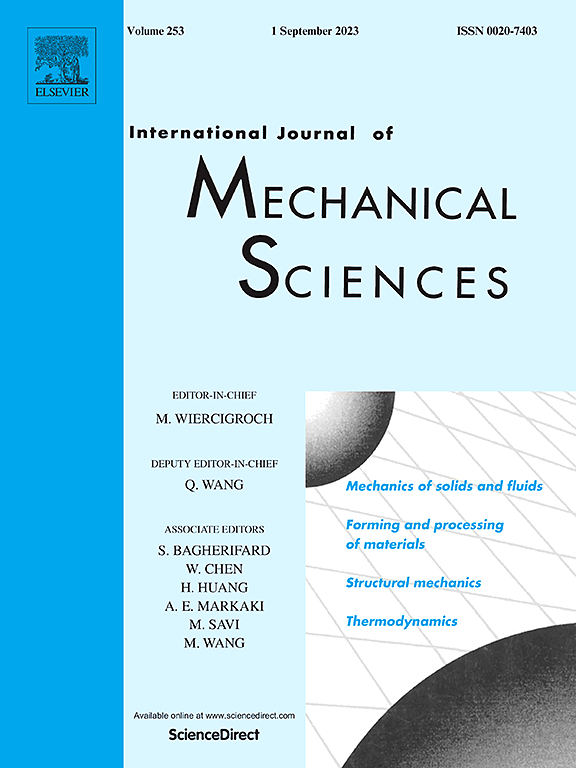Data-driven topology design with persistent homology for enhancing population diversity
IF 7.1
1区 工程技术
Q1 ENGINEERING, MECHANICAL
International Journal of Mechanical Sciences
Pub Date : 2025-06-24
DOI:10.1016/j.ijmecsci.2025.110493
引用次数: 0
Abstract
This paper proposes a selection strategy for enhancing population diversity in data-driven topology design (DDTD), a topology optimization framework based on evolutionary algorithms (EAs) using a deep generative model. While population diversity is essential for global search with EAs, conventional selection operators that preserve diverse solutions based on objective values may still lead to a loss of population diversity in topology optimization problems due to the high dimensionality of design variable space and strong nonlinearity of evaluation functions. Motivated by the idea that topology is what characterizes the inherent diversity among material distributions, we employ a topological data analysis method called persistent homology. As a specific operation, a Wasserstein distance sorting between persistence diagrams is introduced into a selection algorithm to maintain the intrinsic population diversity. We apply the proposed selection operation incorporated into DDTD to a stress-based topology optimization problem as a numerical example. The results confirm that topological features extracted via persistent homology can be appropriately quantified using the Wasserstein distance, and incorporating them into the selection operation significantly enhances the search performance of DDTD.

具有持久同源性的数据驱动拓扑设计,增强种群多样性
提出了一种数据驱动拓扑设计(DDTD)中增强种群多样性的选择策略,即基于深度生成模型的进化算法的拓扑优化框架。尽管种群多样性对于ea全局搜索至关重要,但由于设计变量空间的高维性和评价函数的强非线性,传统的基于目标值保留多种解的选择算子仍然可能导致拓扑优化问题中种群多样性的丧失。由于拓扑结构是表征材料分布内在多样性的特征,我们采用了一种称为持久同源的拓扑数据分析方法。作为一种具体操作,在选择算法中引入了持久性图之间的Wasserstein距离排序,以保持内在种群多样性。作为一个数值例子,我们将所提出的选择操作结合到DDTD中,应用于基于应力的拓扑优化问题。结果表明,通过持久同源性提取的拓扑特征可以使用Wasserstein距离适当量化,并将其纳入选择操作中,显著提高了DDTD的搜索性能。
本文章由计算机程序翻译,如有差异,请以英文原文为准。
求助全文
约1分钟内获得全文
求助全文
来源期刊

International Journal of Mechanical Sciences
工程技术-工程:机械
CiteScore
12.80
自引率
17.80%
发文量
769
审稿时长
19 days
期刊介绍:
The International Journal of Mechanical Sciences (IJMS) serves as a global platform for the publication and dissemination of original research that contributes to a deeper scientific understanding of the fundamental disciplines within mechanical, civil, and material engineering.
The primary focus of IJMS is to showcase innovative and ground-breaking work that utilizes analytical and computational modeling techniques, such as Finite Element Method (FEM), Boundary Element Method (BEM), and mesh-free methods, among others. These modeling methods are applied to diverse fields including rigid-body mechanics (e.g., dynamics, vibration, stability), structural mechanics, metal forming, advanced materials (e.g., metals, composites, cellular, smart) behavior and applications, impact mechanics, strain localization, and other nonlinear effects (e.g., large deflections, plasticity, fracture).
Additionally, IJMS covers the realms of fluid mechanics (both external and internal flows), tribology, thermodynamics, and materials processing. These subjects collectively form the core of the journal's content.
In summary, IJMS provides a prestigious platform for researchers to present their original contributions, shedding light on analytical and computational modeling methods in various areas of mechanical engineering, as well as exploring the behavior and application of advanced materials, fluid mechanics, thermodynamics, and materials processing.
 求助内容:
求助内容: 应助结果提醒方式:
应助结果提醒方式:


